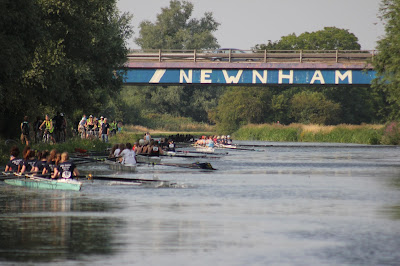Those
are errors of fact but how easy it is for mistakes to creep in. I was horrified
to find two howlers in the first edition of my first book – my
pride and joy – Lemurs of the Lost World.
I’d gone to some trouble to describe exactly the
markings of my beloved lemurs, right down to their lovely soft white chest and belly fur.
I wrote:
 |
| female Crowned Lemur with white underparts checking before entering a cave water-hole |
“Most often we saw
attractive small agile animals with thick grey fur marked subtly with white
underparts and brown on the head. These were adult female Crowned Lemurs.”
Problem was that the publisher's editor (who clearly wasn't into wildlife writing) thought that
I’d made a silly mistake or typo and changed white underparts to white
underpants. Now there’s an image that still makes me smile.
The other embarrassing typo was:
“The door of the concrete
bathroom had disintegrated long ago and had been replaced by some flattened oil
drums in a wobbly wooden frame. It would not stay shut. Inside was a rustling oil drum which
had been filled from the well. Floating on the water was a plastic mug which
gave a clue to the local bathing technique: splashing the water all over me
felt the height of luxury.”
Oops. Since when do oil drums rustle?
Those mistakes were corrected in the second edition and I
also took the opportunity to update the text and especially the appendices
which contain a lot of scientific detail. That edition, surprisingly, continues
to sell steadily in book form though Amazon, and - a new departure - through my author website.
The 25th anniversary of the main expedition to
Madagascar happened and was a stimulus for another update.
I wanted to produce an electronic edition. I’d been contemplating the concept for
some years but my problem was that I wrote the book on an old Amstrad – the
kind with three-and-a-quarter inch discs. Yes 3¼, not 3½. I found a techie who
said he could convert anything and everything – until he saw my discs. So we
settled on scanning the book and converting it into a Word document.
I wasn’t too surprised when the system was
discombobulated by odd Malagasy words like tsingy – that came out mostly as
ts&gy, but accents also confused it. I was surprised too at how the odd
mis-transliterated word can make something so unintelligible. Then there was a
problem with the somewhat curly font reading Bs for Hs so 'had' became 'bad'.
The most interesting error was a sentence that read:
Primates, the
order of mammals which includes lemurs, bushbabies and lorises, apes, monkeys
and Brian, are subdivided according to the shape of the nostrils.
Brian? Where did he come from? How did the system read
Brian for Man? That’s almost Pythonesque.
Now
I wonder how many more mistakes I have left to uncover.... actually there was
one deliberate one in A Glimpse of
Eternal Snows. No-one’s written to
point it out yet! Clue: it is hidden among bird names. Let me know if you notice anything.





